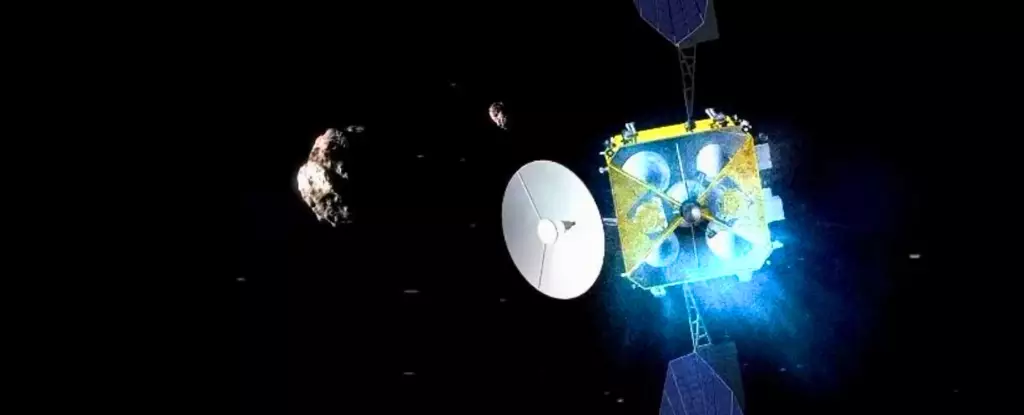China has decisively embarked on an ambitious journey that underscores its growing prowess in space exploration—the launch of its first asteroid-sampling mission, Tianwen-2. On Thursday, the country successfully sent this groundbreaking probe into space aboard a Long March-3B rocket from the Xichang launch site in Sichuan province. This event not only epitomizes the advancements within China’s space program but also illustrates President Xi Jinping’s vision of realizing the nation’s “space dream.”
Beijing’s foray into advanced space missions reflects an unyielding commitment, evidenced by substantial investment that has bolstered its capabilities over the years. In a relatively short span, China has succeeded in establishing a space station and has grand aspirations to launch a crewed mission to the Moon within this decade. Such initiatives paint a picture of a nation intent on playing a pivotal role in the future of space exploration and research.
Mission Overview: Tianwen-2’s Dual Targets
The core of the Tianwen-2 mission is centered around sampling the near-Earth asteroid 2016HO3 and unraveling the mysteries surrounding comet 311P. The asteroid, discovered in 2016, measures about 40 to 100 meters in diameter and orbits closely to Earth. Dubbed a “living fossil,” 2016HO3 carries ancient materials that present a tantalizing opportunity for scientists seeking to decipher the early formation of our Solar System. These samples could provide invaluable insights, propelling our knowledge of cosmic beginnings.
In addition to the asteroid, the mission’s endeavor to explore comet 311P adds another layer of intrigue. Comets often possess characteristics akin to asteroids, making them a subject of interest for researchers. The prospect of obtaining samples from both celestial bodies positions Tianwen-2 as a mission of extraordinary scientific significance.
A Decade-Long Journey: Challenges and Expectations
While the Tianwen-2 mission is set to last approximately a decade, the challenges ahead are not to be underestimated. The complexities of interplanetary travel and the risks involved in sample collection demand not only advanced technology but also a resilient spirit to face potential setbacks. Despite these challenges, the optimism among the researchers at the China National Space Administration (CNSA) is palpable. With aspirations to yield groundbreaking discoveries, the mission holds the promise of redefining our understanding of the cosmos.
The successful launch of Tianwen-2 represents a watershed moment in China’s space exploration narrative, marking it as the third nation to achieve human orbit after the United States and the Soviet Union. Alongside landing robotic rovers on both Mars and the Moon, China’s accomplishments establish it as a formidable player in the space arena. Moreover, its space station, Tiangong—which translates to “celestial palace”—has become a symbol of national pride, housing astronauts engaged in extended scientific missions.
In this grand tapestry of exploration, the aspirations of Tianwen-2 reflect not just a quest for knowledge, but also a desire to inspire future generations. As we continue to look toward the stars, China’s resolute steps into asteroid exploration beckon a new era of excitement and discovery in our collective understanding of the universe.

